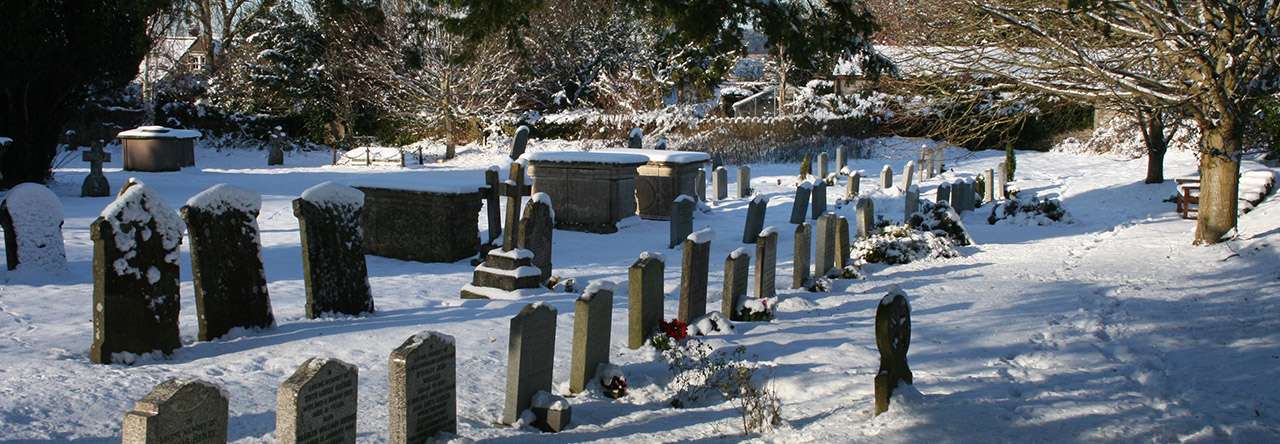I stood on a muddy patch of grass on Newington Green looking up at Maggi Hambling’s memorial to Mary Wollstonecraft, a small naked silver figure emerging above a swirl of organic matter, gleaming and glittering like a fish in the pale autumn sunlight. It was my first visit to London since the pandemic, in that strange time when the full wrath of Covid had passed but we still moved in and out of changing restrictions, alternating between nervous caution and an impatient desire to re-engage with the world.
After a few moments other women joined me: some still wore masks and we all kept a discreet distance from one another, but the air was heavy with unspoken thoughts. Eventually someone broke the hesitant silence: “I’m not quite sure that I understand it.” Empathetic murmurs preceded a burst of speech as we shared knowledge: “I read that she is arising out of female forms to show that she is supported by her predecessors.” “Hambling says it represents everywoman and the birth of the feminist movement rather than Wollstonecraft herself.” “She said that she made it in deliberate opposition to traditional male heroic statuary.” “She made her naked so that she would be relevant for all time, not bound to a certain era by her clothes.”
We were silent again for a few moments, then: “The most important thing is that it is here.” “And that it was made by a female artist.” “Anything new and different is always a bit challenging.” “It would have been inappropriate just to put up a conventional statue.” “I expect it will grow on us.” We parted agreeing that we would revisit the statue.
Two years on and I greet it as a familiar friend and a fitting tribute to Wollstonecraft, for as it says on the plinth, the statue is “for Mary Wollstonecraft,” not of her.
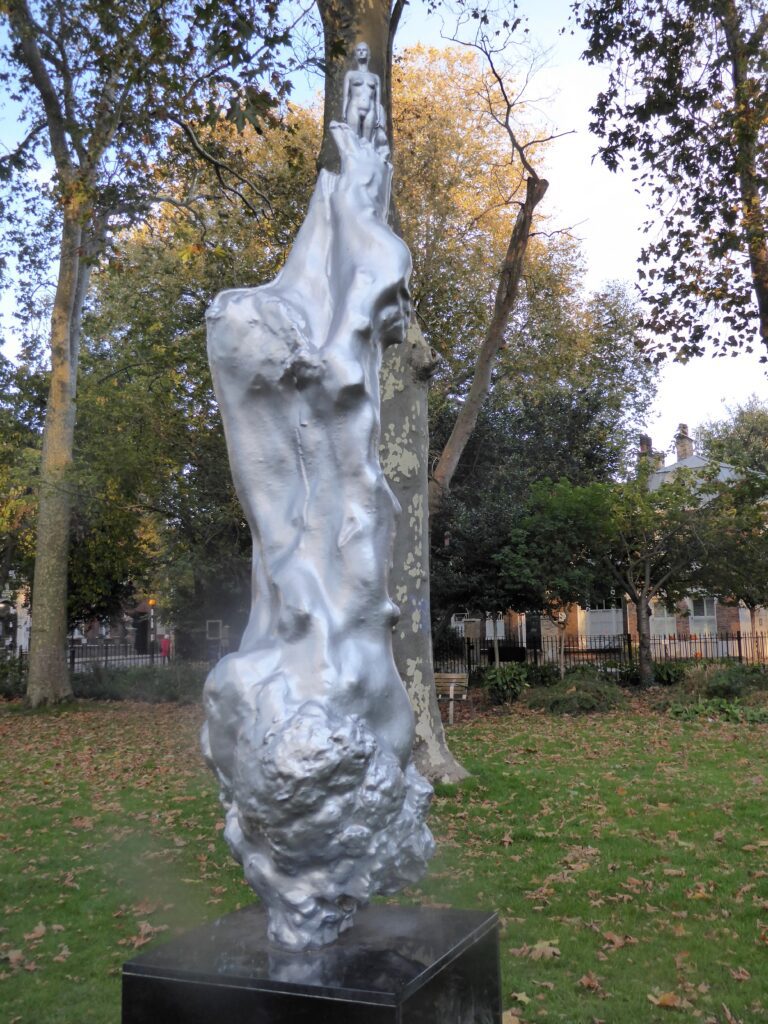
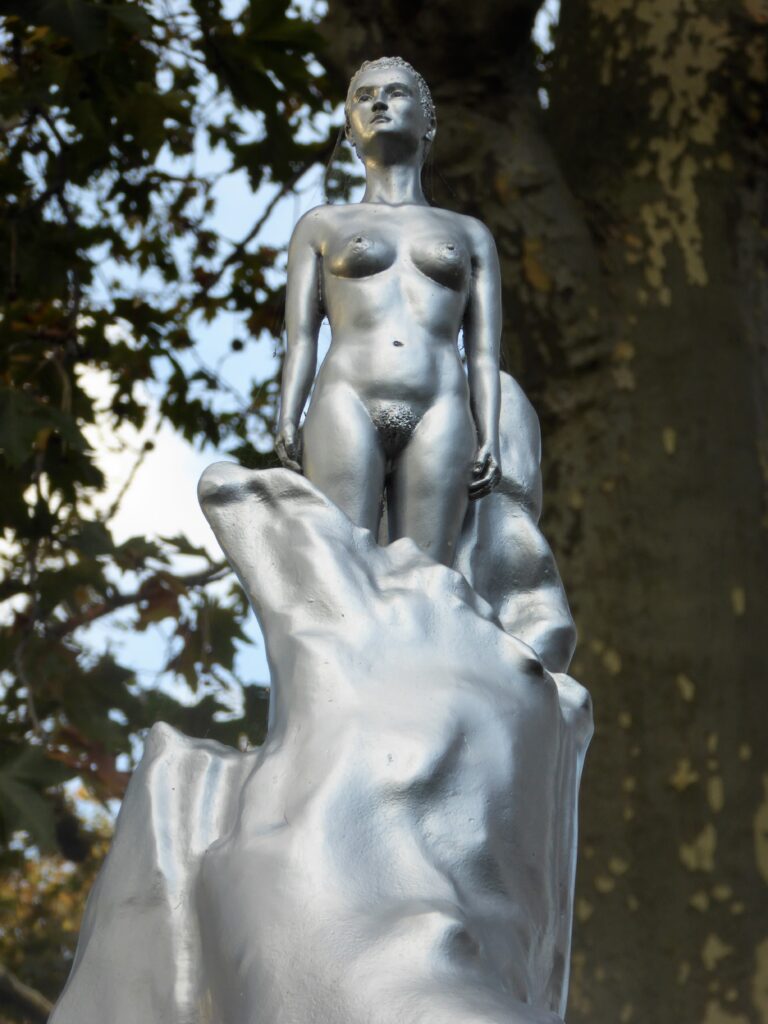
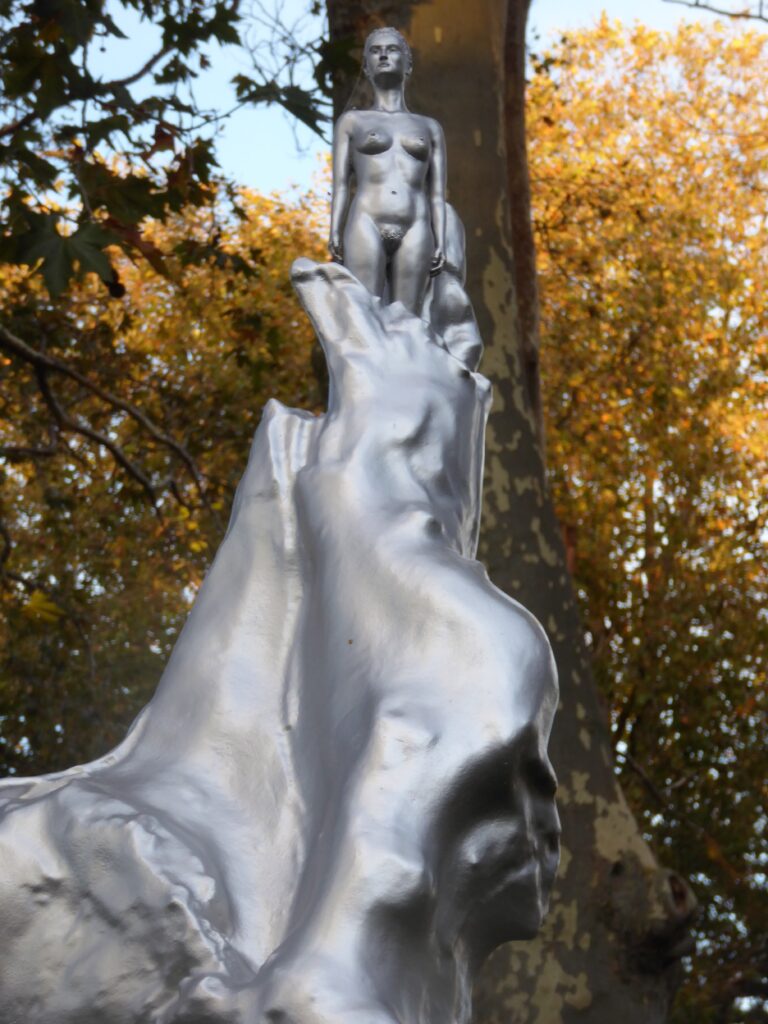
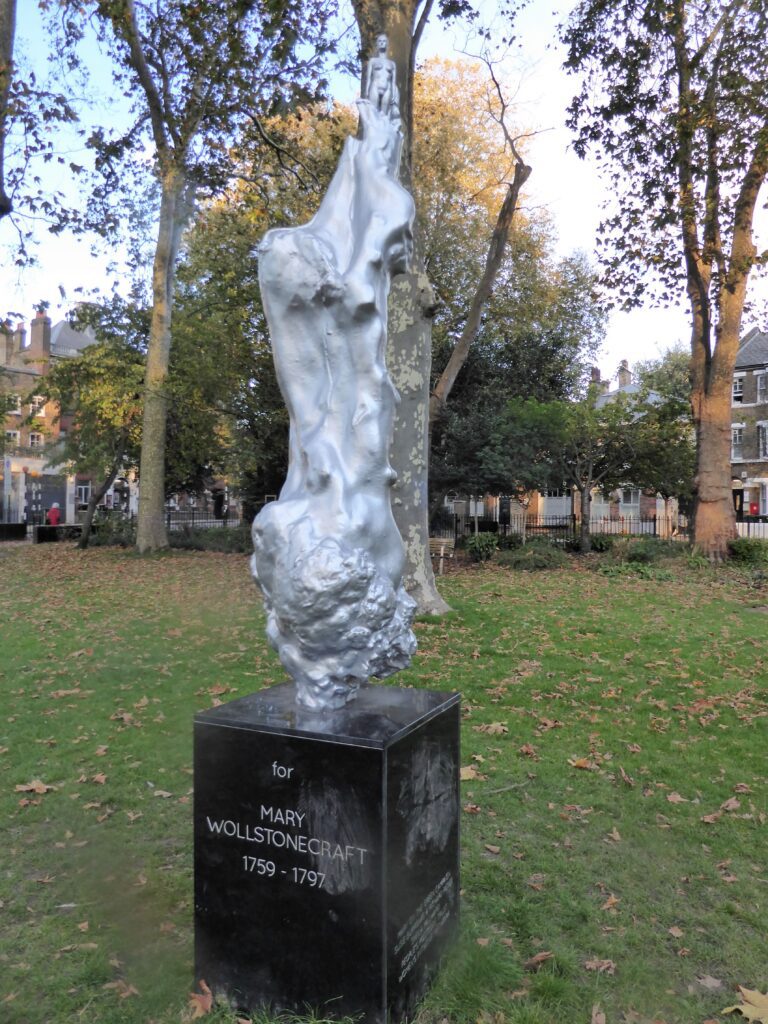
Mary Wollstonecraft (1759-1797) was a writer, philosopher, and advocate of women’s rights. She had variously earned her own living as a lady’s companion, teaching in a school which she founded with her sisters and friend in Newington Green, as a governess, and as a translator before focusing on her own writing.
Her output was prolific, but two books stand out like especially bright stars. Critical of aristocracy, monarchy, church and military hierarchies, all hereditary privilege and advocating Republicanism, Wollstonecraft celebrated the revolutionary events in France. In A Vindication of the Rights of Men (1790) she countered Edmund Burkes’s conservative critique of the French Revolution. When a group of angry women had marched the royal family from Versailles to Paris, Burke had praised Marie Antoinette describing her surrounded by “furies from hell, in the abused shape of the vilest of women.” Mary responded angrily that they were working women angry at the lack of bread to feed their families. Though deeply saddened and depressed by the Jacobin terror and the executions of the Girondin leaders, and offended by the Jacobins’ treatment of women to whom they refused to grant equal rights, nonetheless Wollstonecraft continued to believe in the ideals of the revolution and remained true to her conviction that it represented a great achievement.
At the heart of all her work lay a conviction in the importance of education for women. In A Vindication of the Rights of Woman, (1792), she argued that while women were not inherently inferior to men they often appeared to be because of their lack of education which made them seem silly and superficial, frivolous and incapable, leading to excessive sensibility at the expense of rationality. It precipitated them, unable to support themselves independently, into patriarchal marriages based on economic necessity. They became the mere ornaments and property of men,helpless adornments of their households. Such marriages infantilised them, made them poor companions for their husbands and poor mothers for their children, poor citizens, and poor human beings. Only with education could they achieve independence, support themselves, blossom as individuals with the same rights as men, and realise relationships based love and affection.
Mary had begun an affair with the philosopher William Godwin and when she became pregnant they had married so that society would consider the child legitimate, but Mary died of septicaemia eleven days after her daughter was born.
Godwin’s memoir of his wife, though motivated by his love, compassion, and sense of loss, destroyed her reputation for many years. For he wrote candidly of her personal life as well as her writings, and her love affairs, illegitimate child, and suicide attempts shocked nineteenth and early twentieth century society. She had sought unsuccessfully to live with her married lover, Henri Fuseli and his wife. She had an illegitimate daughter, Fanny, by Gilbert Imlay. She made two suicide attempts when Imlay rejected her, the first by laudanum and the second by trying to drown herself in the Thames. The opprobrium which these actions engendered meant that only in the 1960s did her star begin to rise again when attention refocused on her work.
Godwin buried Mary in the churchyard of Old Saint Pancras Church where they had married, and when she was a small child he took their daughter, also a Mary, on visits to her. When Godwin remarried, the child, unhappy with that second marriage, continued her visits alone. There she would read her mother’s works, and later meet in secret with one of her father’s political followers, the poet Shelley. An unsubstantiated tradition has it that there beside the grave she lost her virginity to him. I choose to believe it.
Like her mother, Mary led a turbulent and unconventional life, eloping with Shelley in the face of her father’s disapproval, facing ostracism and debt. She had four children with Shelley, whom she married after the suicide of his first wife Harriet, but only one of them, Percy Florence Shelley survived. Mary supported herself through her writing producing travelogues, historical fiction, short stories, biographies, and novels, most famously Frankenstein: or, The Modern Prometheus. After Shelley drowned in 1822 while sailing from Livorno to Lerici she devoted herself to promoting and editing his work and ensuring the education of their son.
Mary Shelley had asked her son and his wife Jane to bury her with her parents in Old Saint Pancras, but when she died in 1851 they thought the old graveyard a “dreadful” place. Indeed a local resident had written to The Times in 1850 complaining that, “More than 25 corpses have been deposited every week for the last twenty years in an already overcrowded space: and at this very time they are burying in it nearly twice that rate…teeth, bones, fragments of coffin wood are seen lying in large quantities around these pits.” A few years later it featured in Charles Dickens’ Tale of two Cities as a site of body snatching. Moreover, the arrival of the railway brought further disruption and the railway company supervised the excavation of over 10,000 graves to make way for the new London train terminus at St. Pancras. So they buried her in the churchyard of St. Peter in Bournemouth near their own home and to fulfil her wishes disinterred her parents and reburied them with her.
Later in her desk they found a box containing a human organ wrapped in the preface to Shelley’s poem Adonais, an elegy on the death of his friends Keats. They thought it was Shelley’s heart, for in accordance with quarantine regulations his friends had cremated Shelley on the beach where his body had been borne by the tide, but Trelawny had rescued the slow burning heart and given it to Mary. When Mary Shelley’s son died, both he and the heart joined his mother and grandparents.
At least one modern medical speculation however has suggested that this organ may have been Shelley’s liver rather than his heart, for the liver is a denser and more solid mass and more likely to have resisted the heat. I choose to believe it was the heart; keeping a liver, even one wrapped in poetry, in a desk drawer for thirty years lacks romance.
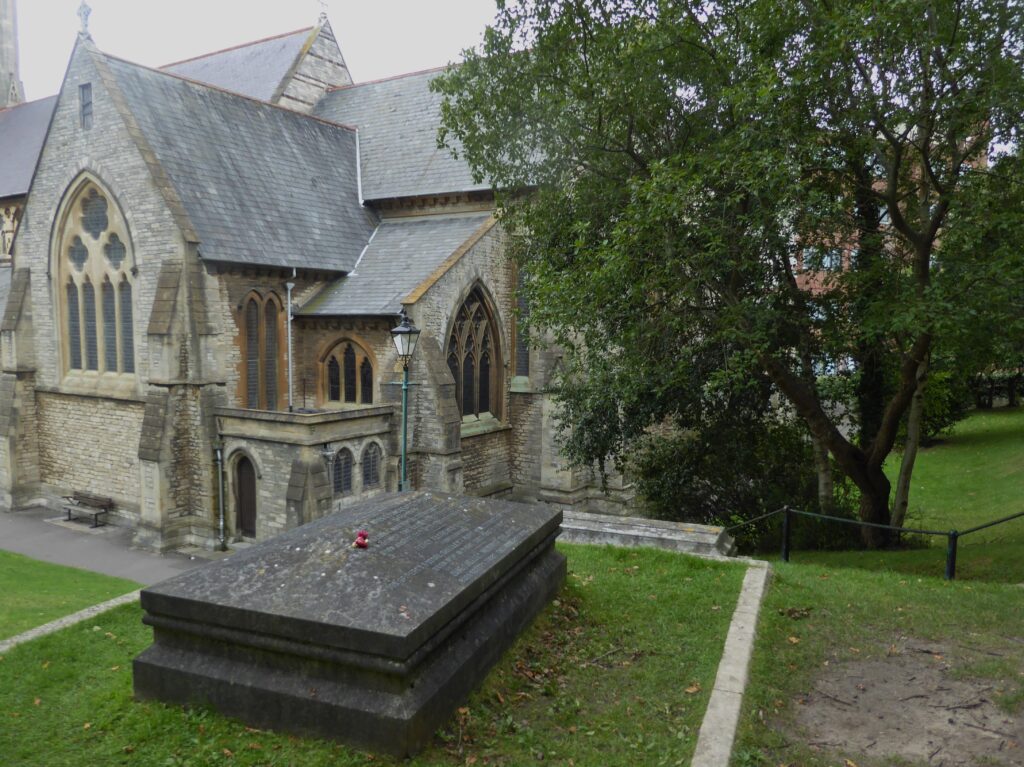
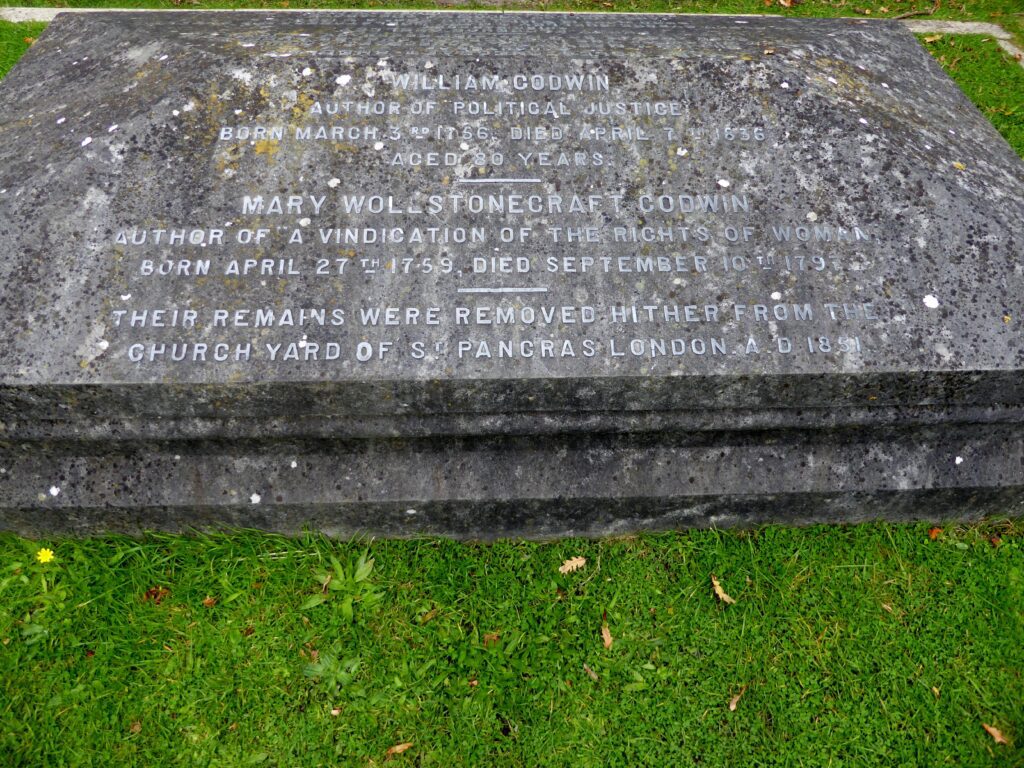
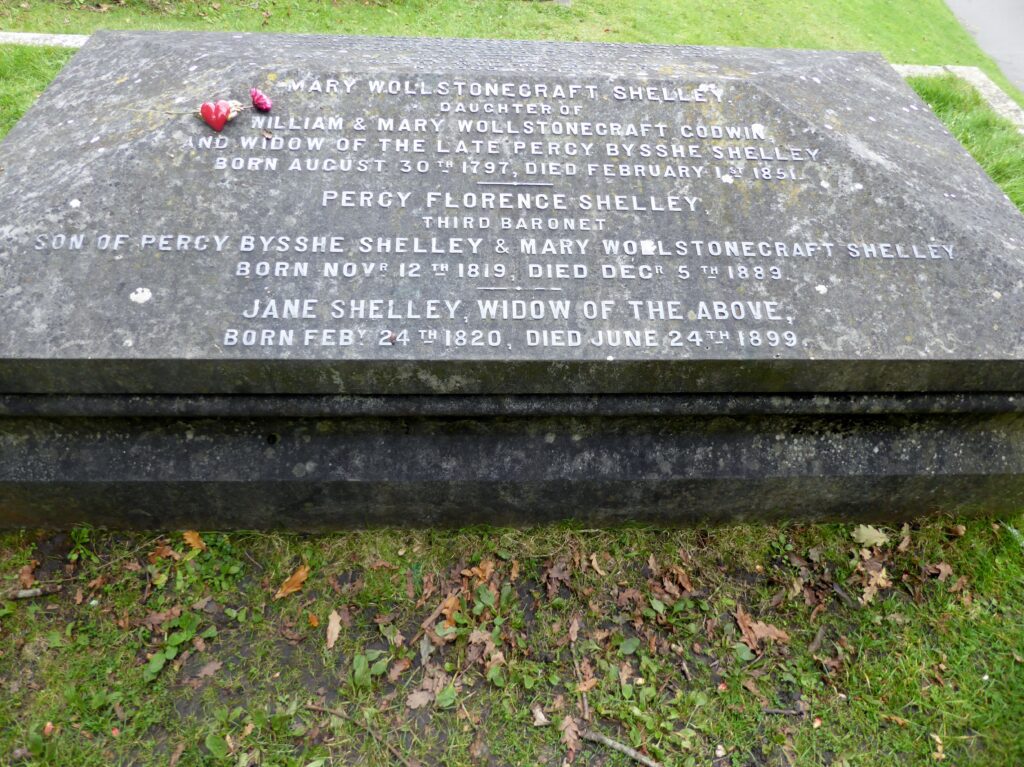
Today the Bournemouth grave despite its famed collection of inhabitants is little visited, the churchyard and the grey Victorian church a little bleak, while ironically the church and graveyard of Old Saint Pancras have a new vitality. The redevelopment of the surrounding area, the restoration of King’s Cross and St. Pancras stations along with the magnificent old Midland Grand Hotel, and the opening of the Crick Institute, have transformed the neighbourhood. The metamorphosis of Coal Drops Yard has seen designer outlets, an abundance of cafes and restaurants, fountains, and gardens replace the dereliction which previously blighted the area with disused railway sidings and warehouses. Ingenious designs have slotted clever apartments into old gasometers. The Central School of Art has located in an old granary. Bright river craft dawdle along the Regent’s canal. And across the road from this vibrant area the graveyard offers a tranquil green space, with its paths and gates recently repaired, shaded seats beneath the mature plane trees and neatly trimmed grass around the tombs. The pretty church is open daily hosting concerts and community groups as well as religious services.
It is Mary Wollstonecraft’s original grave marker which draws her admirers today though neither she nor Godwin lie beneath it. Nonetheless devotees leave tributes to Mary, the tomb chest always bearing an array of pens, pencils, flowers, stones and ribbons There are notes too; like medieval pilgrims visitors seek Mary’s help with exams, relationships, careers, and sometimes they just tell her about their lives, their joys and sorrows, successes and failures, hopes and fears.
I lifted a crystal holding down a sheet of paper torn from a small notebook: “Thank you Mary,” it read “for my education and my rights.”
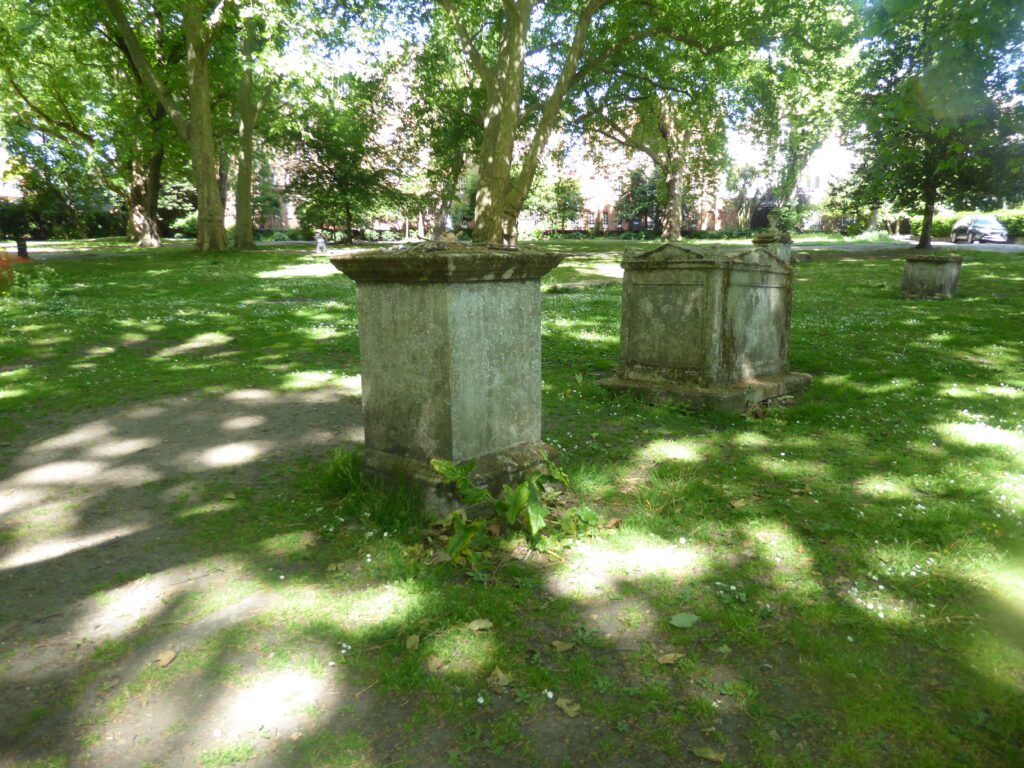

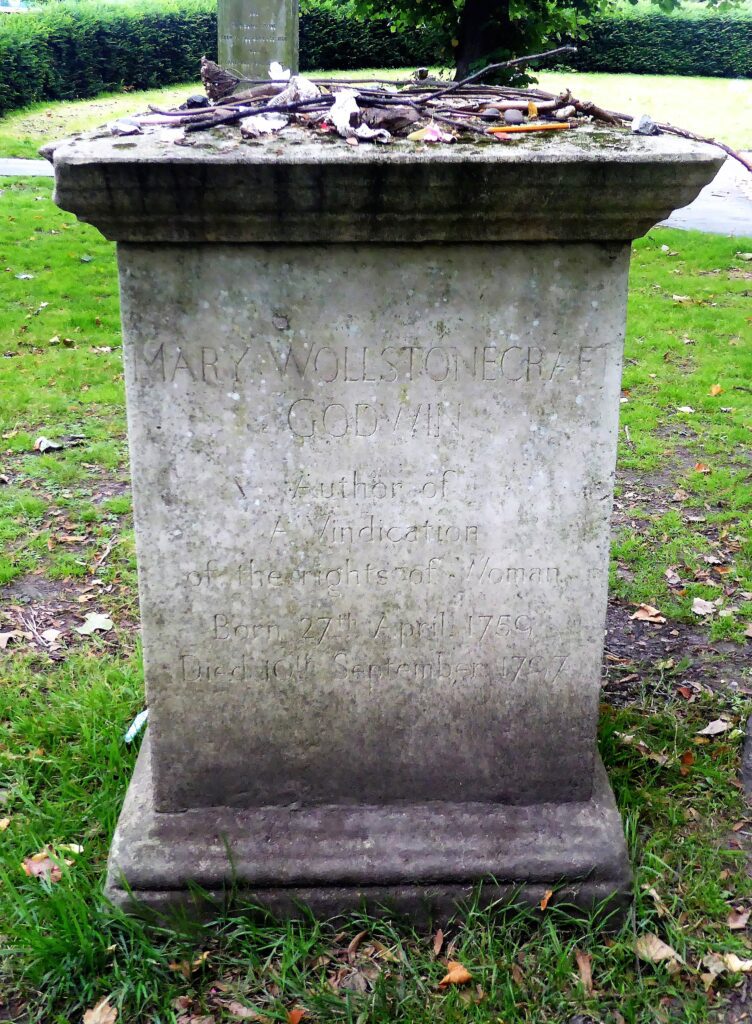
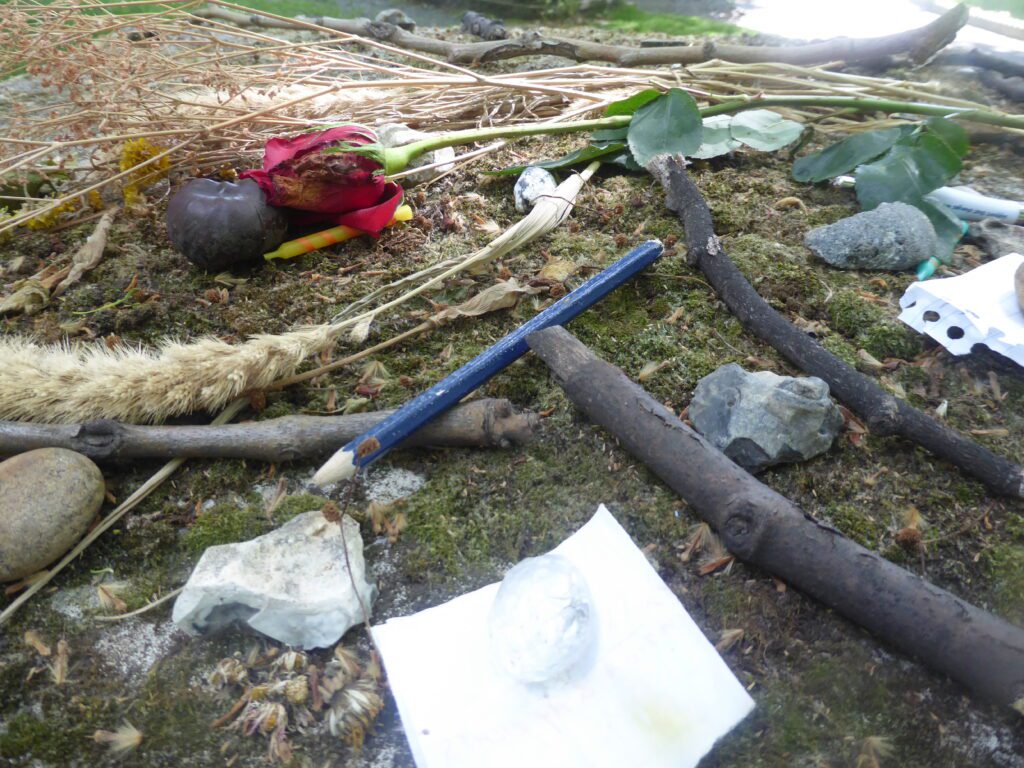
To find out more about Mary Wollstonecraft read Claire Tomalin, The Life and Death of Mary Wollstonecraft.
